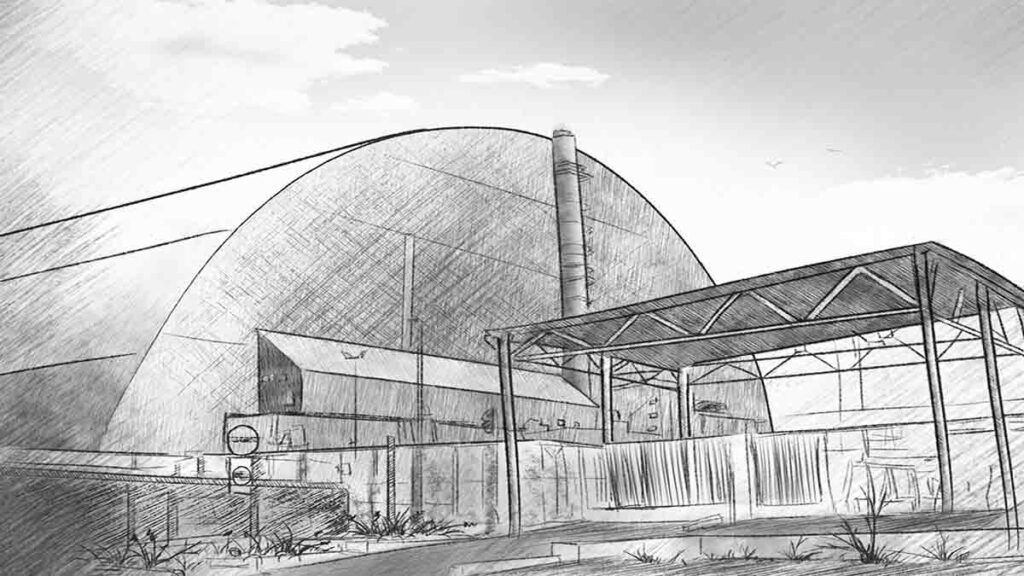
Surely many caught the eye of the photo trap near the old apple tree in the Chernobyl exclusion zone. They are widely popular among users of social networks. Of particular interest are photographs in which the Chernobyl wolf eats apples with pleasure. As they say, it is surprising, but true.
These pictures have become a real revelation for most ordinary lovers of the animal world, because the wolf is a predator, carnivore, and is absolutely not associated with eating fruit instead of hares. But in such cases, comments by experts come to the rescue, who argue that some meat-eaters, when they feel the need, eat not only apples, but also watermelons, apricots, mushrooms, mushrooms, and even tree roots.
You look at a wolf chewing apples and you want to hug him like a domestic dog, because in summer, without winter thick hair, he really looks more like a mongrel than an evil and seasoned predator. And only those who monitor the life of animals in the exclusion zone know that this supposedly cute vegetarian wolf eats about a ton of meat a year, which is why they are calling to control its population.
No joke, one wolf annually destroys about 16 large-hoofed animals such as moose, deer, roe deer, wild boars, not to mention hares, beavers and more. This problem is even more acute in settlements and hunting and fishing farms located near the Chernobyl exclusion zone. Local residents constantly complain that wolves often go into yards, attack dogs and domestic animals.
A glaring case became the story in 2009, when a crazed wolf attacked the employees of the Chernobyl fire brigade and installers of one of the contracting organizations. They had to chase the rabid animal with metal rods, but at the Chernobyl sanitary inspection room the wolf nevertheless caught up with her victim. The beast was then eliminated by the police, but the victims had to go through a long and painful period of treatment.
There is one local nature lover in Chernobyl, who knows absolutely everything about every animal or plant. He popularizes his knowledge on the pages of the most famous media, trying to attract the public to protect and care for the flora and fauna of the Chernobyl exclusion zone. At the same time, regarding wolves, he expresses his unambiguous and uncompromising position – to destroy, as a predator and an insatiable killer of forest inhabitants.
The wolf kills primarily young and pregnant females, causing irreparable damage to the population of ungulates, and only after being completely hungry, it can hunt a sick and unpromising animal. There is no sentimentality in nature; the law of survival is there. And only people tend to ascribe to these merciless predators nobility, or vice versa, to demonize them.
Representatives of science have a different point of view
Observing the animals in the exclusion zone with the help of special modern tracking and photo-fixing equipment, they believe that the categorical position regarding the need to shoot wolves is exaggerated.
After all, wolves have always been integral representatives of the Polesie fauna, although they were constantly persecuted by humans. In fact, there are not several hundred of them, as some say, but about 8-10 packs of wolves that, moreover, systematically migrate to the territory of neighboring Belarus. Scientists believe that the regulation of the number of wolves in the Chernobyl exclusion zone is unreasonable.
In addition, there are free processes of self-regulation of nature. A random shooting will only lead to an increase in the number of wolves, paradoxically as it may seem. Starting the elimination of some adult individuals, others will immediately replace them, because the zone is not a territory isolated from the whole world. Yes, the wolf eats a lot of meat, but ungulates do not get much less, and, as it turned out, it eats plant foods.
The presence of wolves in the exclusion zone does not prevent other animals from flourishing and developing, and perhaps the wolf simply performs the function that nature itself has given it. The contradictions between those who insist on the regulation of their numbers and those who are against it are likely to continue for a long time. In the end, each specialist may have his own vision of this problem.
Today, the zone remains an object in which wolves haven`t been shot yet. In turn, outside of it, they are hunted every winter in hunting farms of other regions of the Polessky region. In fact, man competes with wolves for the meat of ungulates. And it’s good that at least this conflict is minimized in the reserve.